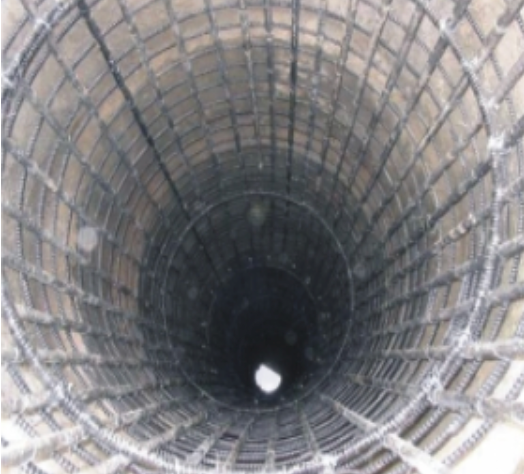Fiber Reinforced Polymer (FRP)
Fiber Reinforced Polymer (FRP) composites should be seriously considered for reinforcing concrete and any application near or in marine environments. The key problem with ferrous reinforcing, even corrosion resistant varieties like epoxy coated or galvanized is that they still corrode eventually. FRP bars and fiber will never corrode, so obtaining 100+ year service life is possible if the concrete is specified properly.
FRP composite rebar has been used since the 1990’s and recent surveys of 25+ year old bridge decks show no deterioration or need for maintenance. Furthermore, the design of GFRP reinforced concrete has just been codified by the American Concrete Institute under ACI 440.11-22. Fiber Reinforced Concrete (FRC) is designed per ACI 544.4R-18 and all products now have ASTM and ICC-ES standards.
The FRP industry has grown in recent years such that there are now 8 companies in the US and Canada in production with many certified by the FRP Institute. The cost of steel has essentially doubled recently which has made FRP in many cases no longer a higher price option that has to be justified by life cycle analysis. The combination of FRP bars and fiber has been shown to be lower in overall cost than epoxy coated solutions, so first-cost competitive.
Alvin C. Ericson, FACI, FPCI
Technical Consultant
GFRP/BFRP* Composite Concrete Reinforcements
Forward Leaning Port Designers, Engineers and Specifiers consider the use of alternative reinforcing materials and construction methodologies to extend project life cycles out to 100+ years.
Traditional use of steel, coated or uncoated can not achieve the desired outcomes of; increased life cycle, increased strength, reduced maintenance cost, lower CO₂ and greenhouse gas emission of material usages.
Alternative, composite materials and HPC/UHPC combinations would provide answers to all of the above challenges and are currently allowed via the codes, SOW specifications and design parameters.
The use of such materials reduces the quantities, transportation and labor requirements by 25% or more. These are well proven and documented materials and techniques, in many cases, invented by US government labs and currently in use regularly in the commercial market and around the world.
Composite materials are readily available in the US market and production can be scaled to demand immediately, to support needs.
USACE approved for commercial code to include application in marine and highly corrosive environments – where it is absolutely superior application.
GFRP/BFRP rebars and panels:
- perform on par or better than their steel counterparts,
- reduce CO₂ in concrete by ~30%,
- are competitively priced,
- non-corrosive, and
- are made in the USA.
According to the USACE-ERDC research center, GFRP/BFRP adds decades to the life of capital projects, minimizes repair, eliminates corrosion, and tends to reduce labor and transportation cost by 1/4 to 2/3rds compared to conventional approaches. No need to recoat, like there is with scratched epoxy or galvanized bar. Additionally the GFRP/BFRP macro fibers can be dosed into the mix to eliminate cracks, shrinkage, and reduce the volume of concrete.
The manufacturing technology is mobile. It is possible to locate the GFRP/BFRP rebar production lines to manufacture at the job site. Further, the raw materials are available, avoiding steel companies current waiting times and volatile pricing.
GFRP/BFRP composite manufacturing, in particular with regard to concrete reinforcement products, is much more flexible and less capital intensive to set up than traditional steel fabrication. A mini steel mill set up takes 3-5 years and usually $1bn to initiate, Similar production of project-ready GFRP/BFRP products can be set up in 6-8 Months for 20-30M and can be relocated upon project completion. Specific jobs can be supported and dedicated onsite with the equipment.
Due to NDA concerns we can’t specifically identify partners at this time however, CompKing Inc. is currently in conversation with 3 large EPC/GEC and two US Agencies, 2 domestic and 4 International infrastructure development groups to utilize GFRP/BFRP composites in the building of Ports, Airports and Harbors, Energy Transfer Facilities, Off Shore Power and Major Road Networks projects. Minimum revenue of any of these projects is in the $100M range.
In over half of the cases noted the intent is to provide local manufacturing to support the construction.
* GFRP/BFRP-Glass Fiber Reinforced Polymers/Basalt Fiber Reinforced Polymers
Years Established
Completed Projects
Latest Projects
Continuous Diaphragm Wall
Project in Shenzhen, China
GBar Rebar Size: 30mm, 28mm, 20mm, 14mm
Continuous Diaphragm Wall (for Tunnel across River)
Project in Nanjing, China
Soldier Piles
Project in Chendu, China
GBar Rebar Size: 25mm, 20mm, 14mm








